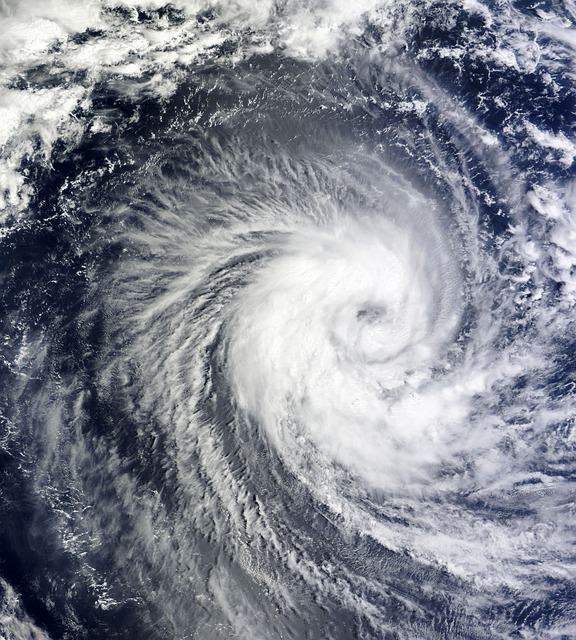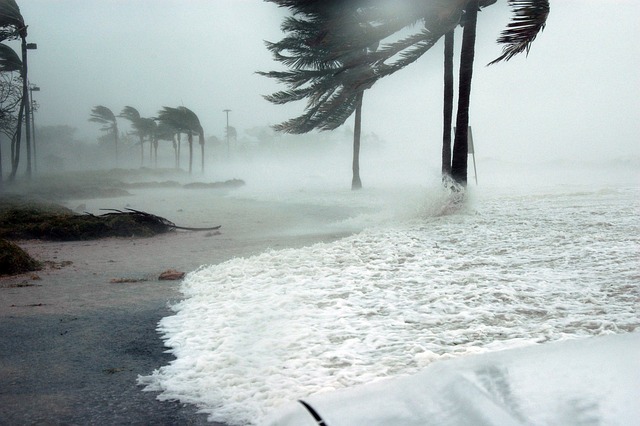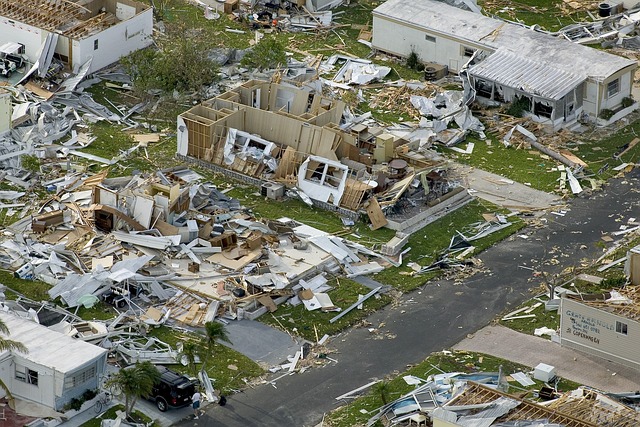The Impact on Southern California
The year 2023 witnessed the unprecedented arrival of Hurricane Hilary, a powerful weather event that significantly impacted Southern California as a tropical storm. As a Category 4 hurricane, Hilary brought torrential rainfall and strong winds to the region, creating a unique set of challenges for residents and authorities in Southern California as a tropical storm. This article explores the origins, tracking, and the implications of Hurricane Hilary on the West Coast, particularly focusing on its effects and the historic tropical storm watch issued for the area.
Understanding Hurricane Hilary

Overview of Hurricane Hilary
Hurricane Hilary formed on August 16, 2023, as a strong tropical cyclone in the Eastern Pacific, quickly evolving into a Category 4 hurricane by the time it reached its peak on August 18. The storm exhibited maximum sustained winds of 140 mph and a central pressure of 940 mbar. Hilary’s path included the Baja California Peninsula and the Pacific Coast of Mexico, where it unleashed devastating flooding and mudslides. The storm’s unusual trajectory prompted the National Hurricane Center to issue the first-ever tropical storm watch for parts of Southern California, signaling the potential for severe weather impacts in the region.
Satellite Imagery and Tracking
Tracking Hurricane Hilary was made possible through advanced satellite imagery utilized by the National Hurricane Center to forecast its path. This technology allowed meteorologists at the National Centers for Environmental Information to monitor the cyclone’s strength and movement as it approached the coast. Notably, the storm maintained its intensity while moving parallel to Mexico, showcasing its expansive reach, with tropical storm-force winds stretching up to 230 miles from the center. Although Hilary did not make direct landfall in Southern California, it transitioned to tropical storm status upon entering the region, illustrating a rare and concerning weather phenomenon for the area.
First-Ever Tropical Storm Watch in Southern California
The issuance of a tropical storm watch for Southern California marked a historic milestone, highlighting the severity of Hurricane Hilary’s threat. This unprecedented warning came from the National Hurricane Center, driven by the storm’s potential for catastrophic flooding and dangerous conditions. The watch, which was later upgraded to a tropical storm warning, affected millions of residents from the Mexico-United States border to just north of Los Angeles. The alert underscored the significant impact Hilary made on the region, prompting communities in Southern California to prepare for possible emergencies as the storm approached.
Impact
In northwestern Mexico, the storm left 315,929 people without power. The Baja California Sur government estimated damages from Hilary at Mex$250 million (US$14.5 million). At least 87 homes suffered damage, with Loreto, Mulegé, and Comondú hit hardest. In Santa Rosalía, 26 houses were destroyed, and Comondú had another 15 buildings ruined. In Mulegé, soldiers helped families evacuate due to flooding. Heavy rain caused widespread flooding and landslides in Baja California Sur. In Los Cabos, at the peninsula’s southern tip, the hurricane caused minor damage to utilities and roads, including potholes. Hilary affected 40 elementary schools, but not enough to delay the school year. Baja California officials reported many mud and rock slides. Floods in Baja California damaged the Transpeninsular Highway and a dozen other major roads. Coastal Sinaloa areas saw heavy rains during the hurricane, with 33 power poles downed, affecting rural roads.
Impact of Hurricane Hilary

Rainfall and Flooding Concerns
Hurricane Hilary brought unprecedented rainfall to Southern California, with some areas experiencing up to 600% of their average annual rainfall for August in a single day. The storm’s maximum recorded precipitation was 13.07 inches in southeastern California, leading to severe flooding in low-lying regions. This catastrophic rainfall inundated homes and swept away vehicles, prompting emergency services to launch numerous rescue operations. The intense rain also contributed to mudslides, further complicating recovery efforts. Communities across the region faced significant damage, with infrastructure severely impacted and residents grappling with the aftermath of this historic rainfall event.
Wind Damage and Power Outages
The winds associated with Hurricane Hilary wreaked havoc across Southern California, as wind gusts reached up to 87 mph in Los Angeles County and 84 mph in San Diego County. The powerful gusts resulted in extensive damage, including downed trees and power lines, leaving approximately 41,000 customers without electricity. Many areas faced prolonged outages, complicating the recovery process. The high winds also caused significant property damage, destroying roofs and other structures, which posed hazardous conditions for emergency responders. The storm’s wind damage highlighted the multifaceted impact of Hilary, showcasing the challenges faced by communities in the wake of a major hurricane.
Emergency Preparedness and Response
In anticipation of Hurricane Hilary, emergency services and local governments took extensive measures to prepare for the storm’s impact, especially in desert areas prone to flooding. The National Weather Service issued flood watches and warnings, while Governor Gavin Newsom declared a state of emergency for Southern California as a tropical storm. Local agencies opened emergency shelters and coordinated evacuations in high-risk areas to ensure community safety. The Federal Emergency Management Agency (FEMA) mobilized resources, preparing emergency supplies and collaborating with state agencies to enhance readiness for potential hurricanes or tropical storms. Public transportation disruptions and numerous flight cancellations reflected the storm’s widespread impact, underscoring the need for comprehensive emergency response strategies in the face of such a historic weather event.
Aftermath of the Storm

Recovery Efforts in Affected Areas
In the aftermath of Hurricane Hilary, the recovery efforts in Southern California and parts of Mexico focused heavily on restoring infrastructure and providing assistance to communities severely affected by the storm. The California Department of Transportation estimated that road repairs alone would cost over $146 million, as many highways and local roads were either damaged or completely washed away by the torrential rainfall. Emergency funds were mobilized swiftly to assist families displaced by flooding, with local governments stepping in to offer tax relief for impacted property owners. In Baja California, the Mexican government declared a state of emergency, deploying critical resources to restore power and clear debris, enabling residents to begin the long process of recovery from the devastating effects of the storm.
Lessons Learned from Hurricane Hilary
The impact of Hurricane Hilary has highlighted significant lessons regarding emergency preparedness and response strategies in Southern California. The unprecedented issuance of a tropical storm watch underscored the importance of timely communication and public awareness about the risks associated with tropical cyclones. Analysis of the storm’s extensive effects revealed vulnerabilities in existing infrastructure, particularly in flood-prone areas, prompting critical discussions about future resilience measures. Urban planning must now evolve to incorporate strategies aimed at mitigating similar impacts in the future, ensuring that communities are better equipped to handle the challenges posed by such powerful storms.
Future Implications for Southern California
The remnants of Hurricane Hilary serve as a stark reminder of the changing climate and the increasing likelihood of extreme weather events affecting Southern California. The storm’s unusual trajectory and intensity may prompt further research into the region’s preparedness for future tropical storms and hurricanes. As climate change continues to influence weather patterns, communities will need to adopt more robust planning and infrastructure strategies to cope with the potential for storms that could bring similar or even greater impacts in the future. The lessons learned from Hurricane Hilary will play a crucial role in shaping policies aimed at enhancing resilience and safeguarding lives in the face of evolving environmental challenges.
FAQ
How many people died from Hurricane Hilary?
This hurricane is considered the most lethal weather catastrophe in U.S. history, taking the lives of at least 8,000 folks, and some guesses even go up to 12,000.
When was Hurricane Hilary in California?
Hurricane Hilary hit Baja California on August 20, 2023, and then dumped a ton of rain, caused flooding, and whipped up strong winds in Southern California on August 20 and 21.
What happened to Hurricane Hilary?
Without any convection, Hilary turned into a post-tropical cyclone. By early August 21, it got swallowed up by a new non-tropical low-pressure system that was forming near the southern coast of California, outside of where Hilary’s winds were reaching.
What hurricane hit California in 2024?
Hurricane Kyle, also called the Great Californian and West Coast Hurricane of 2024, was a massive Category 6 storm that hit California and the West Coast in October 2024.
What is the biggest hurricane in history?
The 1970 Bhola cyclone was the most lethal tropical storm ever, hitting East Pakistan (now Bangladesh) and West Bengal in India. It ranks among the worst humanitarian disasters globally.
When did Hurricane Hilary hit Los Angeles?
Back in August 2023, Hurricane Hilary was a massive and fierce storm that hit the Pacific. It dumped a ton of rain and whipped up strong winds along Mexico’s Pacific Coast, the Baja California Peninsula, and the Southwestern U.S. This led to a lot of flooding and mudslides all over the place.
Has Hurricane Hilary hit California yet?
Major letdown: Hilary wasn’t a tropical storm when it slammed into California, according to experts. People in Cathedral City are checking out the flood damage the day after Hilary hit in August 2023. Initially thought to be a tropical storm, Hilary’s now been downgraded to just a post-tropical low.
How many have died in Hurricane Hilary?
Major downgrade: Turns out Hilary wasn’t a tropical storm when it slammed into California, according to the experts. Folks in Cathedral City are checking out the flood damage the day after Hilary rolled through in August 2023. Initially thought to be a tropical storm, Hilary’s now been reclassified as a post-tropical low.
What are 90% of hurricane deaths caused by?
When a hurricane hits, people often get hurt or worse from drowning in floods and storm surges, or from getting hit by stuff flying around in the crazy winds. Once the storm’s over, folks can get injured or killed by getting electrocuted, getting cut or hurt from slipping or falling trees, and even catching infections.
